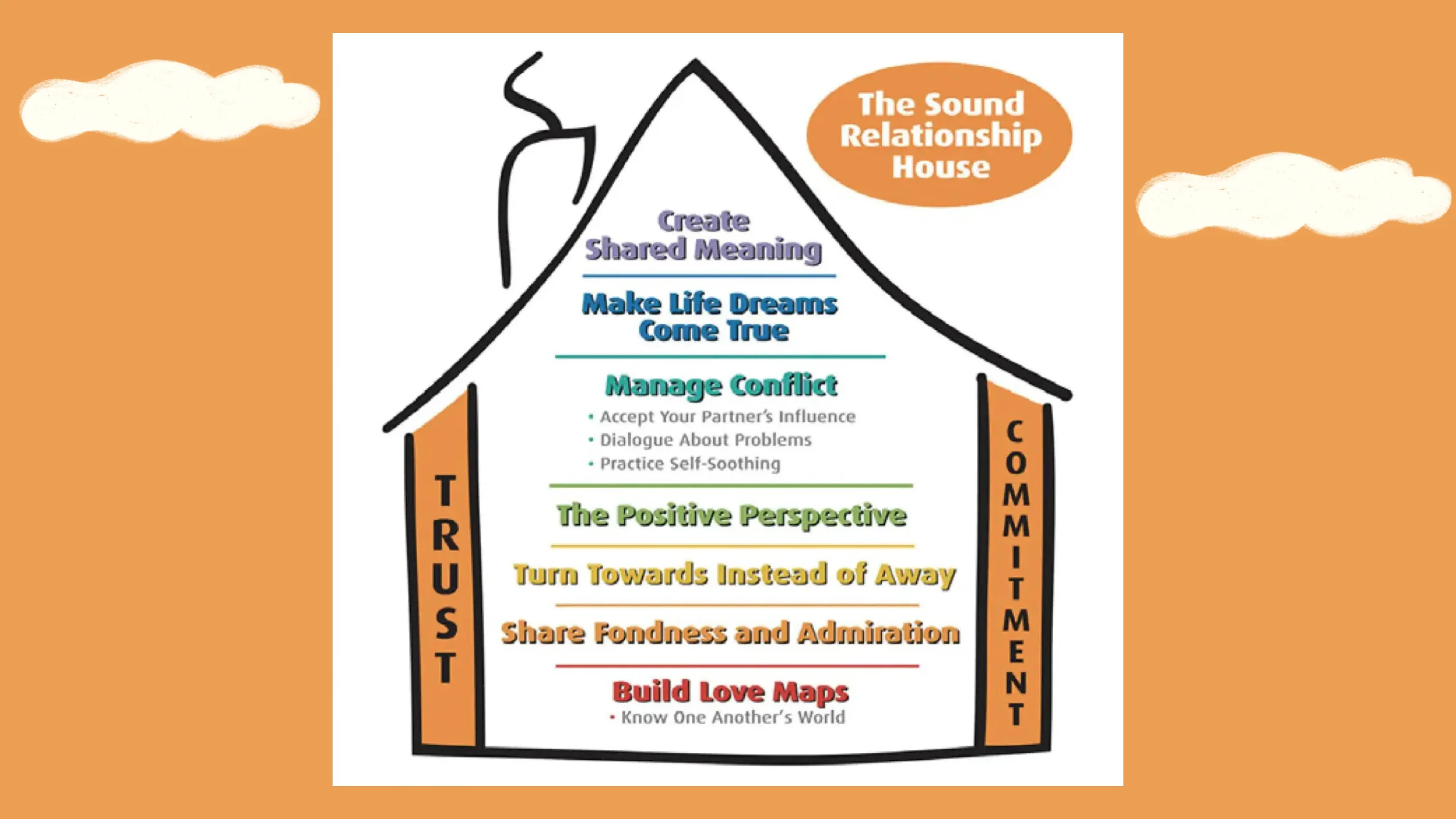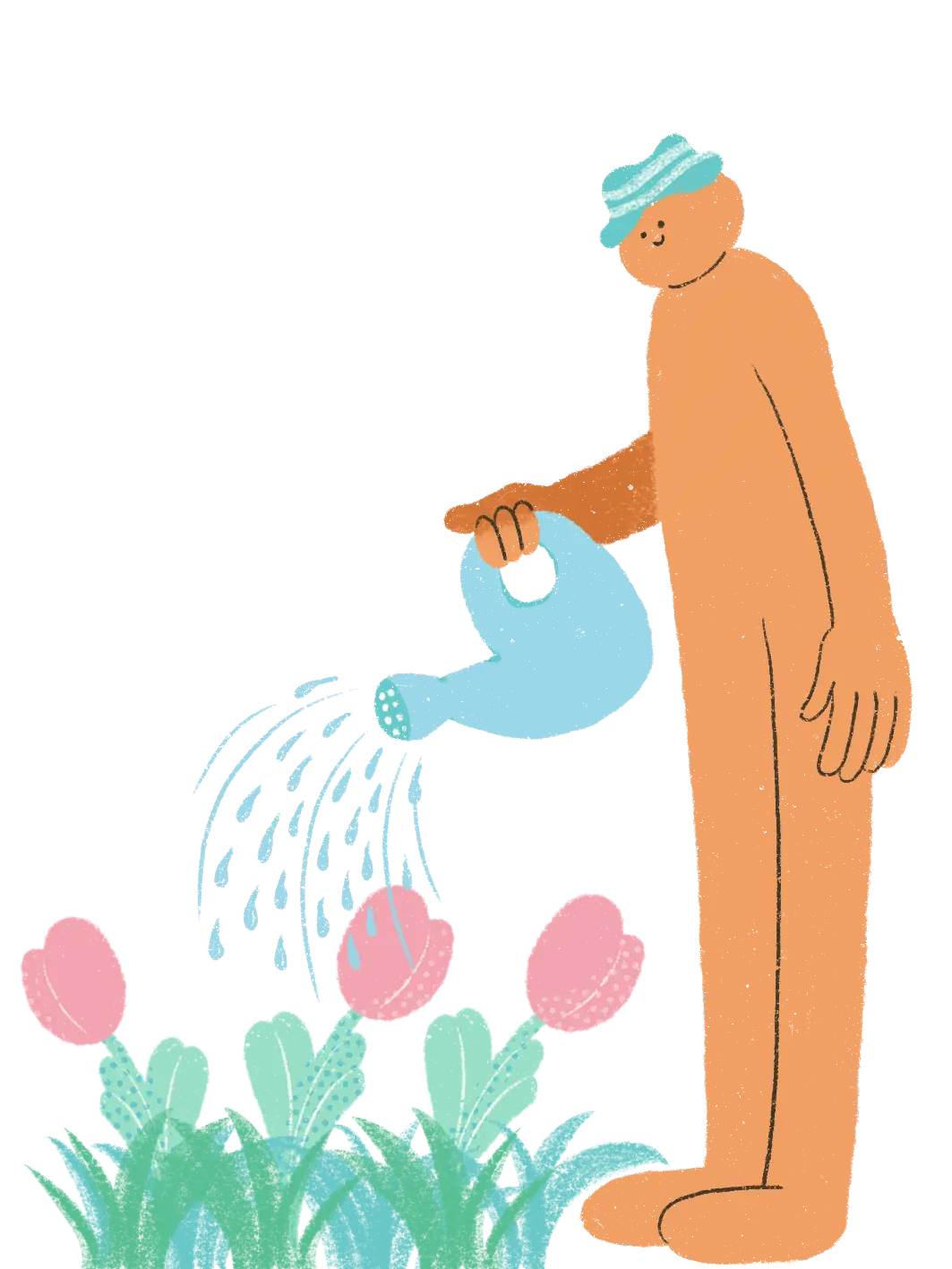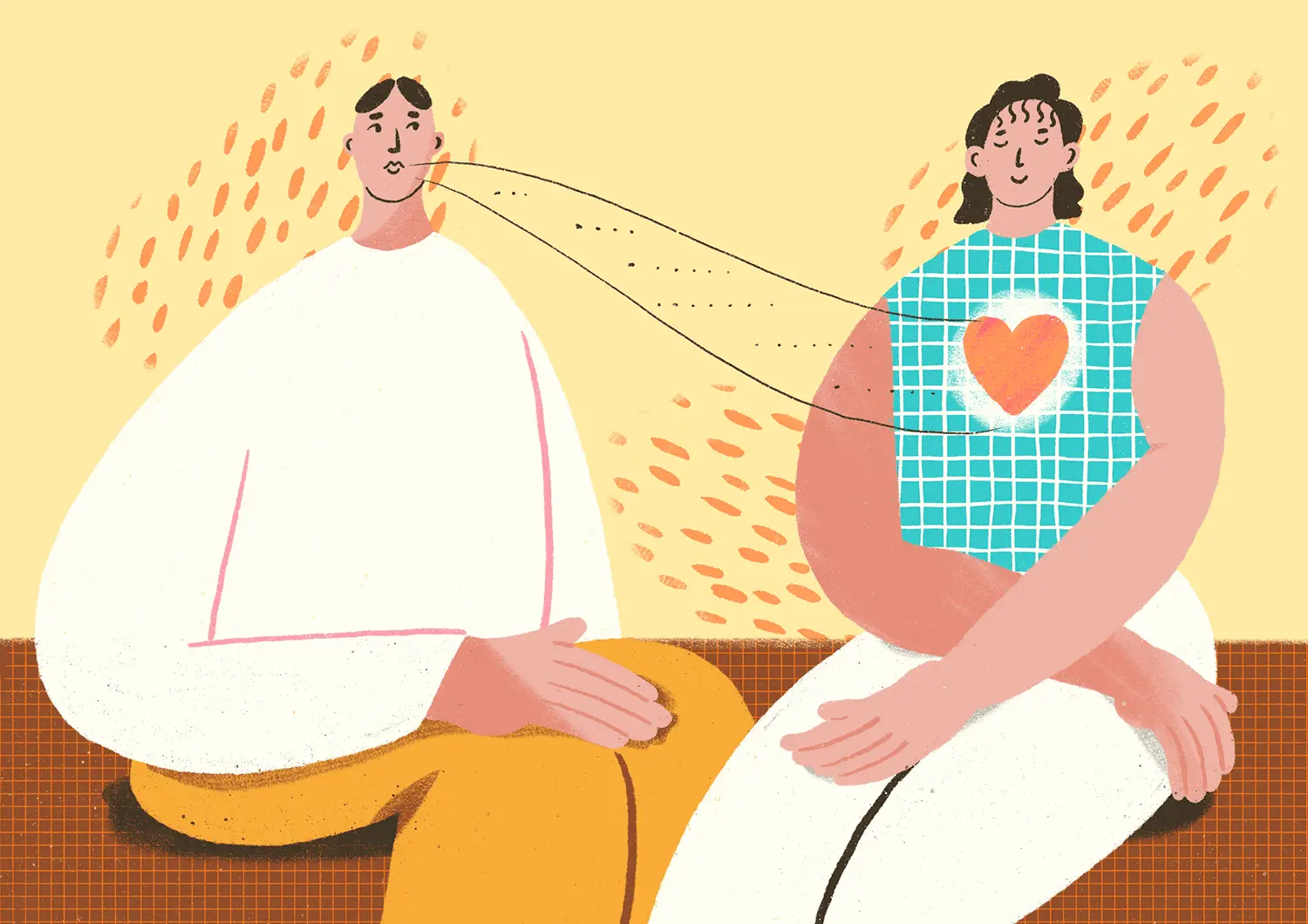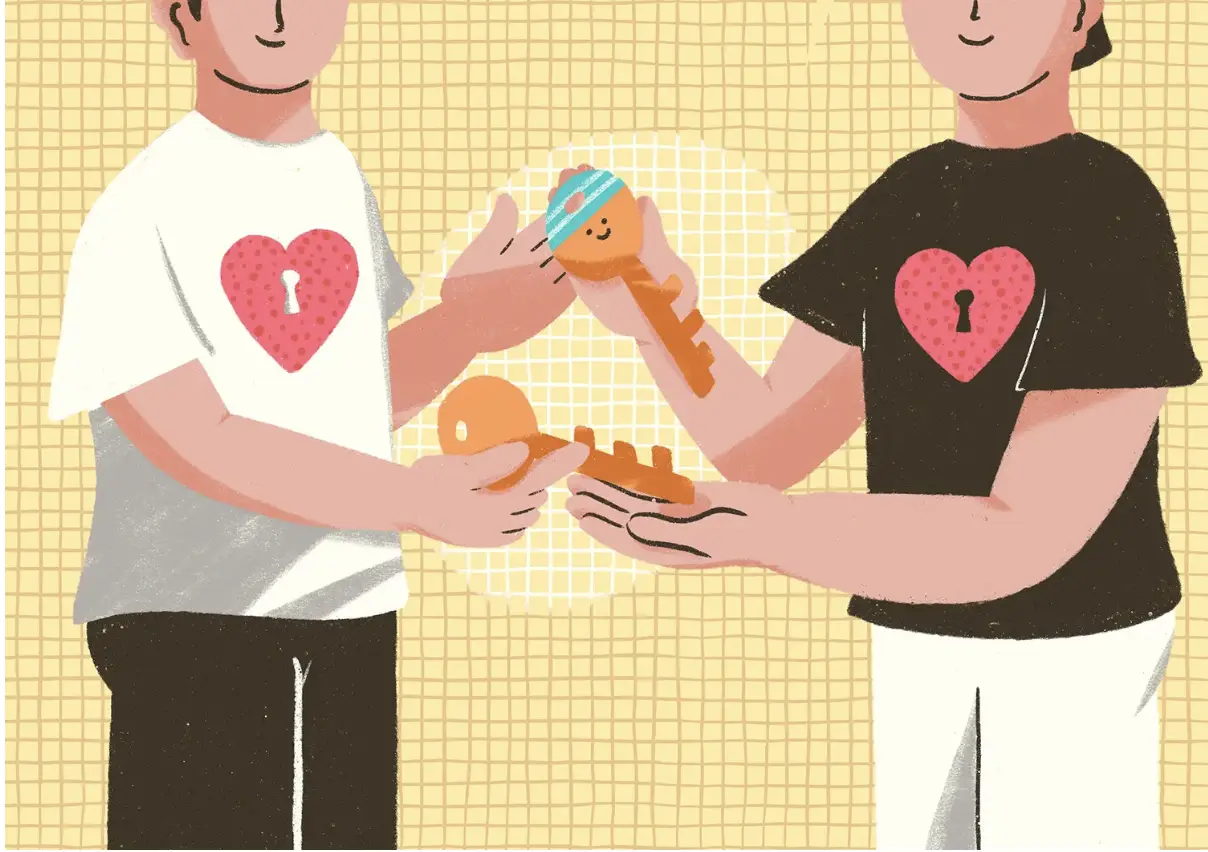
Have you ever reached out with love and kindness in a close relationship, only to be surprised that the other person seemed completely unaware of it?
Imagine you’re preparing to travel abroad with your partner. You’ve carefully planned the itinerary, booked local tours, and exchanged cash. Feeling confident and satisfied with your efforts, your partner suddenly says, “You’ve been so busy lately; you don’t spend any time with me.” How would you feel? Confused? Frustrated? You might wonder why your partner can’t see all that you’ve done. Yet, inside, your partner could be thinking, “Why doesn’t he/she understand my true needs?” In this example, you’re expressing love through acts of service, but what your partner may really need right now is quality time.
In intimate relationships, we sometimes fail to understand our partner’s “love language” and, as a result, may be unaware of the love they are trying to express. In 1992, American author and pastor Gary Chapman published The Five Love Languages, identifying five ways of expressing love that remain widely popular:
- Quality Time: Expressing love by giving your undivided attention to your partner, and fully engaging with one another.
- Acts of Service: Demonstrating love through thoughtful actions that help or ease your partner’s responsibilities, such as doing household chores or running errands.
- Words of Affirmation: Communicating affection and appreciation through verbal encouragement, compliments, and positive affirmations.
- Physical Touch: Showing love and closeness through physical contact like hugging, kissing, and other forms of affectionate touch.
- Receiving Gifts: Expressing love by giving thoughtful and meaningful gifts that symbolize care and appreciation.
Chapman believes that each person has their own primary and preferred "love language". For example, some may look forward to spending quality time with their partner on weekends, while others may feel most loved when receiving help during stressful times through acts of service. Furthermore, Chapman suggests that when partners' primary love languages align, relationship satisfaction tends to be higher. Love can only be truly received when communicated in the language the other person understands; otherwise, misunderstandings of love are likely to occur. The concept of the "Five Love Languages" provides a simple and effective way for partners to understand and meet each other's primary expressions of love.

Is There Scientific Evidence Supporting the “Five Love Languages”?
Books and tests related to the "Five Love Languages" have remained popular since their emergence in the 1990s, with many people eager to discover their own, their partner’s, friends’, or family members’ love languages. Scholars have debated this concept as well. Supportive research shows that the "Five Love Languages" align closely with relational maintenance typology, featuring similar categories like assurance and sharing tasks - behaviors people engage in to maintain relationships.
However, some research critiques this classification, arguing that expressions of love are more diverse and nuanced than the five categories capture, and therefore, the framework is neither comprehensive nor entirely accurate. Studies have found that while many participants identify quality time and physical touch as their primary love languages on forced-choice questionnaires (The Love Language Personal Profile), receiving gifts often scores highest on Likert-type scales, indicating that people’s love language needs can vary by context. Further research even suggests that expressing love in a partner’s primary love language does not necessarily lead to greater relationship satisfaction. Additionally, most of these studies focus on heterosexual relationships, and the effectiveness of love languages may differ across genders and within same-sex relationships.
Last year, researchers from the University of Toronto's Department of Psychology examined the scientific basis of the "Five Love Languages". Researcher Emily Impett noted that when people complete the questionnaire, they are required to choose between the five love languages, such as selecting either receiving gifts or holding hands. However, in real life, these love languages can coexist simultaneously. In fact, people often report that they consider all five love languages to be very important in a relationship.
Healthy Love Requires Balanced Nourishment
They found no scientific evidence to support the idea that expressing love in a partner’s preferred love language leads to more successful relationships. They emphasized that expressing love in any form can bring happiness to the relationship. The researchers suggested that the key to lasting love is similar to the concept of a "balanced diet" - a relationship requires a variety of “nutrients”. Beyond the five love languages, this includes companionship, emotional support, and support for a partner’s autonomy and personal goals, etc. Importantly, the state of a relationship is fluid, and different stages call for different forms of nourishment; therefore, it is overly simplistic to define a person’s needs solely through the five love languages.
Although the "Five Love Languages" is not a strict scientific theory, it still provides a valuable framework that helps people understand their own and their partner’s ways of expressing love. It creates opportunities for reflection, discussion, and actively responding to each other’s needs. It raises awareness that expectations and needs exist, may differ, can be communicated, and often can be met after open dialogue. It also reminds us to shift perspective in relationships - from “how do I want to show love” to “what does my partner need” - so that expressions of love resonate more deeply.

Introducing “The Love Map” and “The Sound Relationship House”
The enduring popularity of the "Five Love Languages" reflects people’s eagerness to find ways to improve their intimate relationships. We can also turn to the renowned psychologist John Gottman’s theory of the "Sound Relationship House". Widely respected in the field of emotion and relationship psychology, Gottman developed this model based on decades of research and clinical work focused on relationship stability and satisfaction, even though it has not been extensively validated by large-scale studies. The Sound Relationship House deconstructs the essential elements of an ideal relationship, offering couples a practical blueprint for building and maintaining a strong, healthy bond.

(Sources:The Gottman Institute)
He metaphorically compares a healthy intimate relationship to a sturdy house, with the "Love Map" serving as an essential foundation. The Love Map represents the part of our brain where we store detailed information about our partner’s life. Continuously updating this map by learning more about each other’s worlds - whether small details like a partner’s preferred sweetness level in bubble tea, or significant experiences such as past joys and pains, relationships with family and friends, work challenges, and life concerns - helps couples navigate life’s stresses, changes, and conflicts together.
This is a "Love Map" exercise provided by The Gottman Institute:
- Name your partner’s two closest friends.
- What was your partner wearing when you first met?
- Name one of your partner’s hobbies.
- What stresses your partner right now?
- Describe in detail what your partner did today or yesterday.
- What is your partner’s fondest unrealized dream?
- What is one of your partner’s greatest fears or disaster scenarios?
- What is my favorite way to spend an evening?
- What is one of your partner’s favorite ways to be soothed?
- Name a person your partner dislikes.
- What is your partner’s ideal job?
- What medical problems does your partner worry about?
Exploring the "Love Map" helps deepen partners' insight and continuously update their understanding of each other's lives. Beyond the "Love Map", the other levels of the "Sound Relationship House" include:
- Share Fondness and Admiration
- Turn Towards Instead of Away
- The Positive Perspective
- Manage Conflict
- Make Life Dreams Come True and Create Shared Meaning
The various elements and levels of the relationship house build trust and commitment, which support and uphold the entire relationship house.

Building a relationship is an ongoing journey, where every moment of communication and sharing becomes a precious opportunity for love to flow. Whether through the “love languages” or the “love map”, these tools remind us that love is not just about how we express it, but about how deeply we strive to communicate, understand, and respond to each other’s needs. As the timeless words from The Little Prince teach us: “It is the time you have devoted to your rose that makes your rose so important.” It is through this heartfelt care and mutual attention that love resonates more profoundly, making the relationship truly precious.
References:
Flicker, S. M., & Sancier‐Barbosa, F. (2025). Testing the predictions of Chapman's five love languages theory: Does speaking a partner's primary love language predict relationship quality?. Journal of marital and family therapy, 51(1), e12747. https://doi.org/10.1111/jmft.12747
Impett, E. A., Park, H. G., & Muise, A. (2024). Popular Psychology Through a Scientific Lens: Evaluating Love Languages From a Relationship Science Perspective. Current Directions in Psychological Science, 33(2), 87-92. https://doi.org/10.1177/09637214231217663
Bunt, S., & Hazelwood, Z. J. (2017). Walking the walk, talking the talk: Love languages, self‐regulation, and relationship satisfaction. Personal Relationships, 24(2), 280-290. https://doi.org/10.1111/pere.12182
Gottman, J., & Gottman, J. (2017). The natural principles of love. Journal of Family Theory & Review, 9(1), 7–26. https://doi.org/10.1111/jftr.12182
Egbert, N., & Polk, D. (2013). Speaking the language of love: On whether Chapman’s (1992) claims stand up to empirical testing. Open Communication Journal, 7(1), 1–11. http://dx.doi.org/10.2174/1874916X20130423001
Egbert, N., & Polk, D. (2006). Speaking the language of relational maintenance: A validity test of Chapman's Five Love Languages. Communication Research Reports, 23(1), 19-26. https://doi.org/10.1080/17464090500535822
Shannon Sauer-Zavala. (2025). What Science Actually Says About "Love Languages". Psychology Today. Retrieved at https://www.psychologytoday.com/us/blog/self-made/202501/love-languages-what-science-actually-says-about-relationships#:~:text=Key%20points-,Love%20languages%20are%20a%20popular%20concept%20but%20lack%20scientific%20evidence,require%20deeper%20connection%20and%20responsiveness.
Denis Storey. (2024). Study Refutes Concept of Love Languages. Psychiatrist.com. Retrieved at https://www.psychiatrist.com/news/study-refutes-concept-of-love-languages/
Gery Karantzas. (2023). Is There Science Behind the Five Love Languages?. Greater Good Magazine. Retrieved at https://greatergood.berkeley.edu/article/item/is_there_science_behind_the_five_love_languages
Ellie Lisitsa. (2012). The Sound Relationship House: Build Love Maps. The Gottman Institute. Retrieved at https://www.gottman.com/blog/the-sound-relationship-house-build-love-maps/




